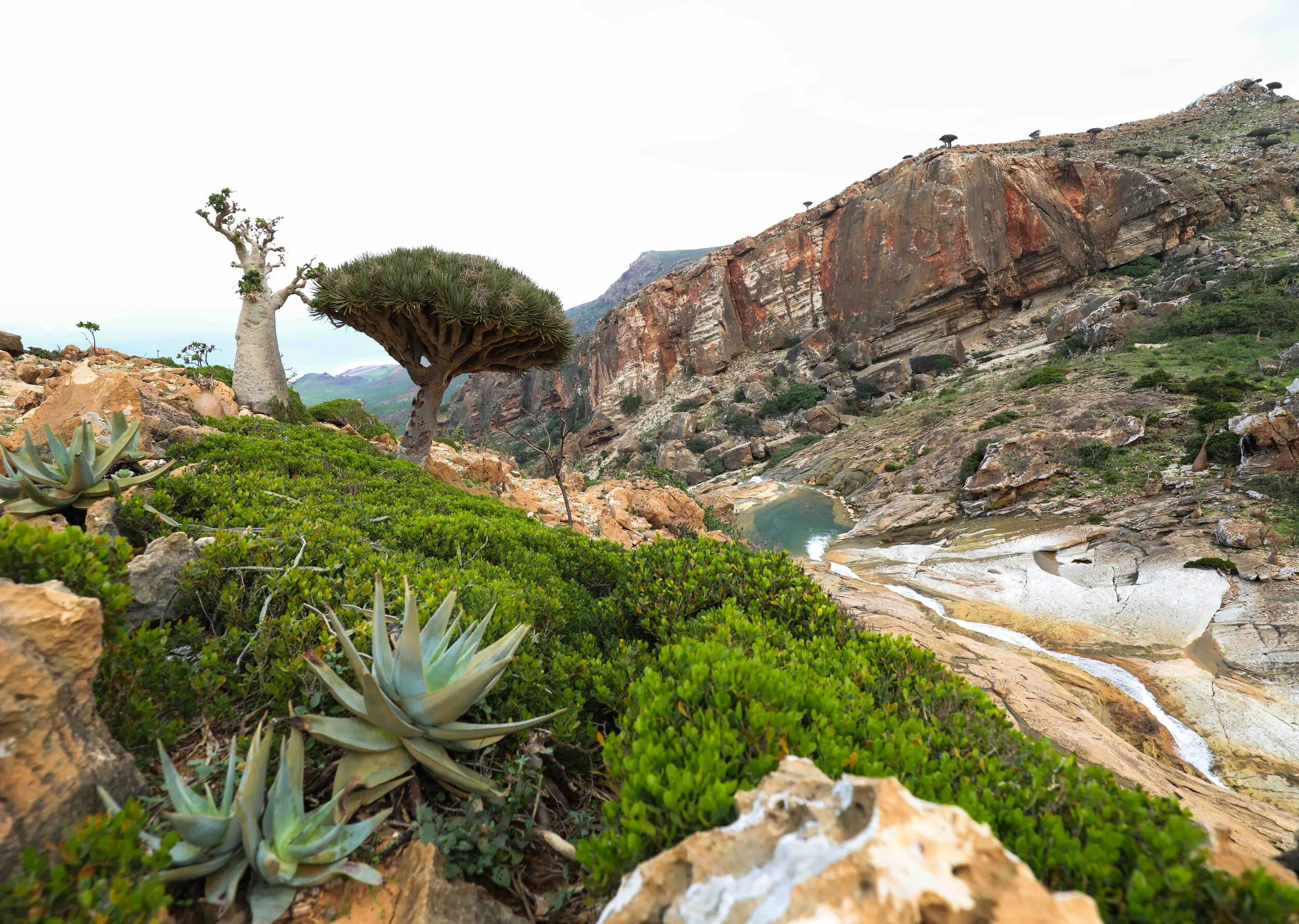Turns Out, There's Wildlife in Iran
It was in the middle of a tea break, while we were sitting at the top of a mountain over the Valley of the Assassins, huddled in a shepherd’s tent for shade in the 45 degree heat, that I discovered I’m a proper nerd.
My sister was learning how to drink tea through a sugar cube Iranian style while our hiking guide and the shepherd were talking.
Being a cave diver, my sister wanted to know of any possible cave systems not yet explored. Yes, there were caves. The problem is the leopards in the caves, they said.
Leopards? My ears pricked up. “What do they eat up here?’ I asked ‘the goats?”
“Yes, it’s a big problem” they said. And suddenly I had my nerd on big time.
Chatting wildlife conflict over chai in Iran’s Valley of the Assassins
Were they allowed to shoot the leopards?
No, the government would fine them.
So what was the big gun at the front of the tent for?
The wolves.
Oh. And is anyone working with the farmers to study wildlife behavior & trial mitigation techniques?
No, there isn’t. But the farmers know there’s no natural prey left for the leopards, so they HAVE to take the goats.
One wolf-proof ‘walking stick’ propped up against the Shepherd’s tent where he chills out when taking his goats into the mountains
Did they have much else up there?
Boars and porcupines. And the boars weren’t being taken out because you can’t eat them when you’re Muslim.
Were they crop-raiding?
Why, yes.
What about hyenas?
Yep, those too. And they’re also actively hunting in these parts (striped)
Do they head into towns in the Valley to pick through the garbage cans?
Yes, they do.
And just like that, I was off in my own little world chatting through Iranian human/wildlife conflict issues and debating the remaining range of the Asian cheetah in the country.
Iran, who’d have thought of it as a wildlife destination? (And there are bears here too. And I’m told there used to be both tigers AND lions, if you can believe they’d possibly have an overlapping range historically!)
Proper nerd.
Where domestic cattle rearing has taken over, and no natural prey species survive for resident leopards, both villagers’ and struggling resident predators’ livelihoods end up at risk
LEARNING MORE ABOUT WILDLIFE IN IRAN
During my time in Iran, I became increasingly interested in the historical distribution of wildlife in the area.
The number one challenge to finding out more, was that it isn’t a typical topic of conversation for visitors to Iran, so there aren’t a lot of pre-prepared answers to be found.
Another challenge appears to be that studies in human wildlife conflict in Iran have not been particularly abundant to date. Since my visit to Iran in late 2018, a study on human wildlife conflict between farmers and onagers (a wild donkey) was published in August 2019 - which outlines the dynamics of human wildlife conflict well.
Another study published in the Journal for Nature Conservation in April 2018 focussed on human wildlife conflict in Iran between farmers and wild boars and wolves.
The essential talking points from both studies revolve around the fact that where local economies are impacted negatively by wildlife (through crop loss and/or predation of cattle) the perceived value of keeping wildlife populations stable in the area decreases dramatically. Key considerations in alleviating conflict were suggested with respect to reintroducing prey species in the case of predators, effective barriers to crop-raiding by browsing / grazing wildlife and compensation for losses endured by farmers - which was lacking in both studies.
This isn’t rocket science, but it IS a perspective often overlooked by city-dwellers who romanticise how ‘nice’ it would be to have wildlife around, without having a general awareness of the possible negatives that come with it.
Having spent so much time living in Africa, in Northern Botswana where the biggest population of African elephants is found, the subject of human wildlife conflict is one that has interested me for years, and comes tied to a lot of nuances that are easy to overlook at first.
If anyone has more information on human wildlife conflict in Persia, I would love to hear from you.
Or, if you’re interested in travelling to Iran and learning more : hit me up. I would love to plan a fact-finding trip down the track.



